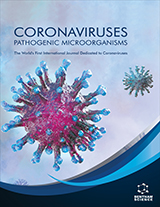Abstract
Background: The Public Health Emergency of International Concern by the World Health Organization (WHO) declared novel Coronavirus (nCoV-2019) outbreaks in 2019 as pandemic.
Methods: This research work made an analysis of the nCoV-2019 outbreak in India solely based on a mathematical model.
Results: The historical epidemics in the world are plague, AIDS, Swine flu, ebola, zika virus, Black Death and SARS. Considering the model used for SARS 2003, the present research on COVID-2019 estimates characteristics of the rate of infections (I) and rate of recovery(R), which leads to the estimation of the I and R leading to predict the number of infections and recovery. Through ruling out the unpredictable and unreasonable data, the model predicts that the number of the cumulative 2019-nCoV cases may reach from 3398458 (mid of May) to 15165863, with a peak of the unrecovered infection (2461434-15165863) occurring in late April to late July. In this paper, we predicate how the confirmed infected cases would rapidly decrease until late March to July in India. We also focus on how the Government of Odisha (a state of India) creates history in the protective measures of COVID-19.
Conclusion: The growing infected cases may get reduced by 70-79% by strong anti-epidemic measures. The enforcement of shutdown, lockdown, awareness, and improvement of medical and health care could also lead to about one-half transmission decrease and constructively abridge the duration of the 2019 n- CoV.
Keywords: Infectious disease, coronavirus, SARS, pandemic, prediction, respiratory syndrome.
Graphical Abstract
[http://dx.doi.org/10.1016/j.csbj.2019.01.003] [PMID: 30809323]
[http://dx.doi.org/10.1016/j.ijsu.2020.02.034]
[http://dx.doi.org/10.1109/ACCESS.2020.2979599] [PMID: 32391240>]
[http://dx.doi.org/10.1016/j.ijantimicag.2020.105938] [PMID: 32171740]
[http://dx.doi.org/10.1109/TCSS.2020.2980007]
[http://dx.doi.org/10.1097/MCC.0b013e328364d645] [PMID: 23995125]
[http://dx.doi.org/10.1016/S0140-6736(20)30185-9] [PMID: 31986257]
[http://dx.doi.org/10.1007/978-981-13-9042-5_49]
[http://dx.doi.org/10.1111/0022-1082.00320]






























